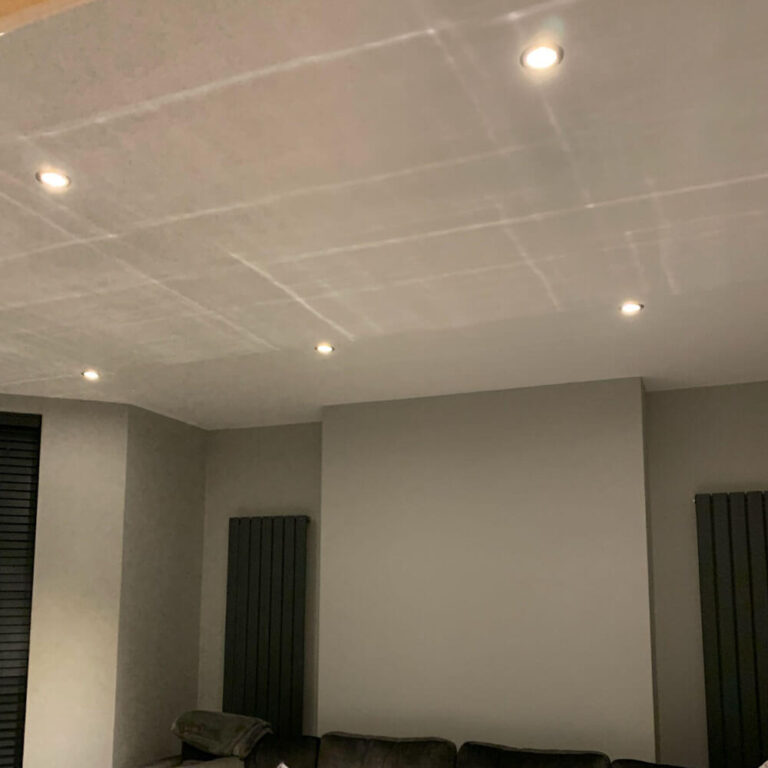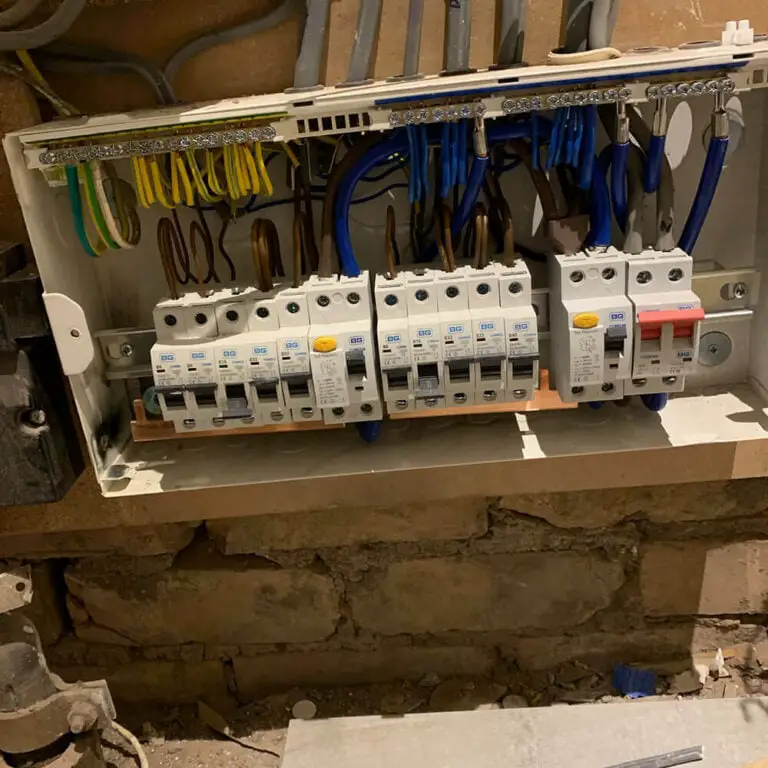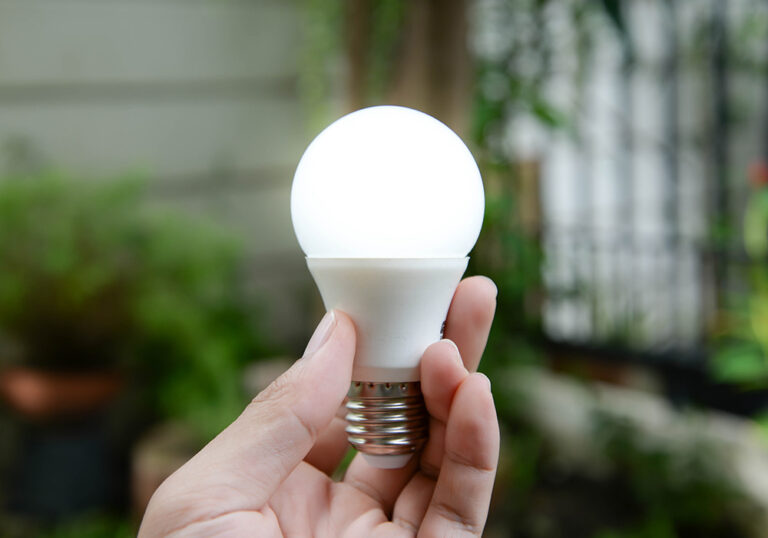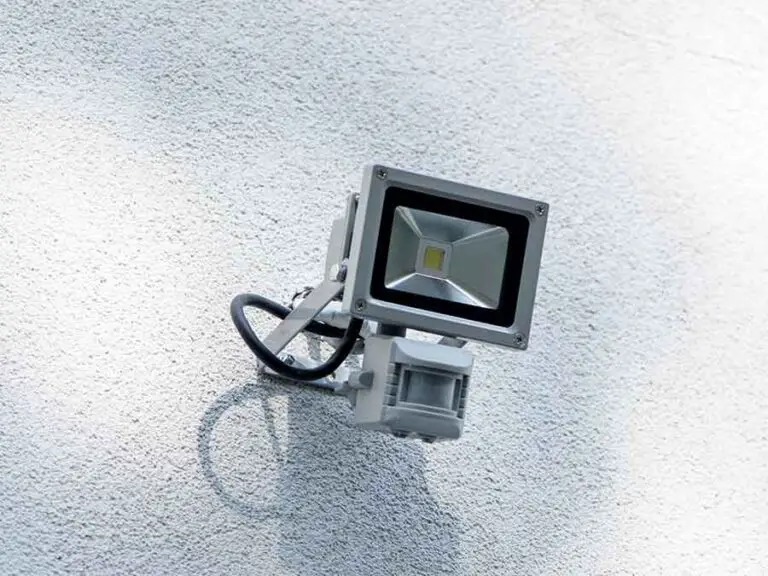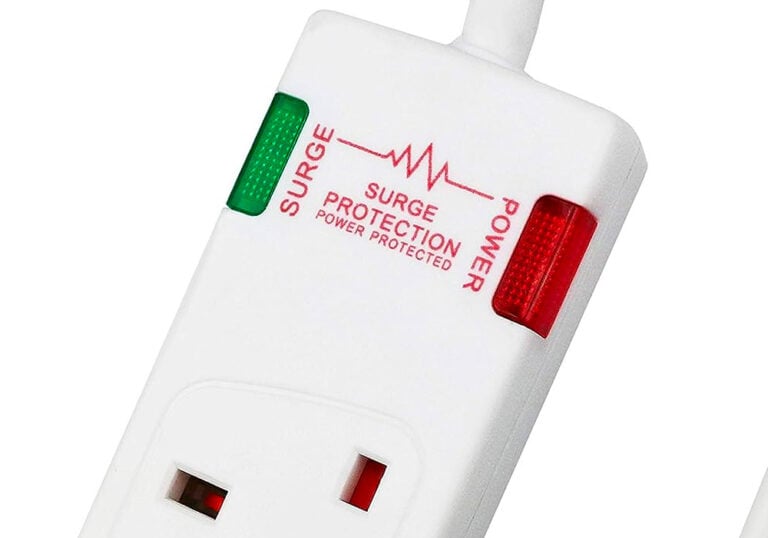How Many Dimmer Switches Can Be On One Circuit?
Dimmer switches have become increasingly popular in modern homes, offering an energy-efficient and versatile way to control the lighting in different rooms. This increased use of dimmer switches sparks the question of how many can be installed on one circuit. To better understand this concept, it’s essential to have a basic understanding of electrical circuits and how dimmer switches function.
An electrical circuit in a home connects various lights, appliances, and outlets through a network of wires, allowing them to receive power from the main electrical panel. Dimmer switches regulate the flow of electrical current to lights, enabling the user to control the brightness and intensity. These switches interrupt the current, adjusting the voltage passing through the bulb for a customised lighting ambience.
With the increasing demand for dimmer switches in homes, it’s vital for homeowners, builders, and DIY enthusiasts to be aware of any limitations or precautions when installing multiple dimmer switches on a single circuit. It’s also crucial to be aware of any misconceptions and follow safety measures to ensure a secure and functional lighting system.
Key Takeaways
- Dimmer switches allow adjustable brightness and energy efficiency in home lighting.
- A basic understanding of electrical circuits is essential when connecting multiple dimmer switches.
- There’s no limit on the number of dimmer switches you can install on a home lighting circuit, but proper precautions and safety measures must be followed.
Basic Understanding of Electrical Circuits
Before we explore the topic of dimmer switches and their capacity in a circuit, it’s essential for you to understand the basics of electrical circuits. An electrical circuit is a closed loop through which an electric current flows. It consists of various components, such as power sources, wires, switches, and load devices like lamps or appliances.
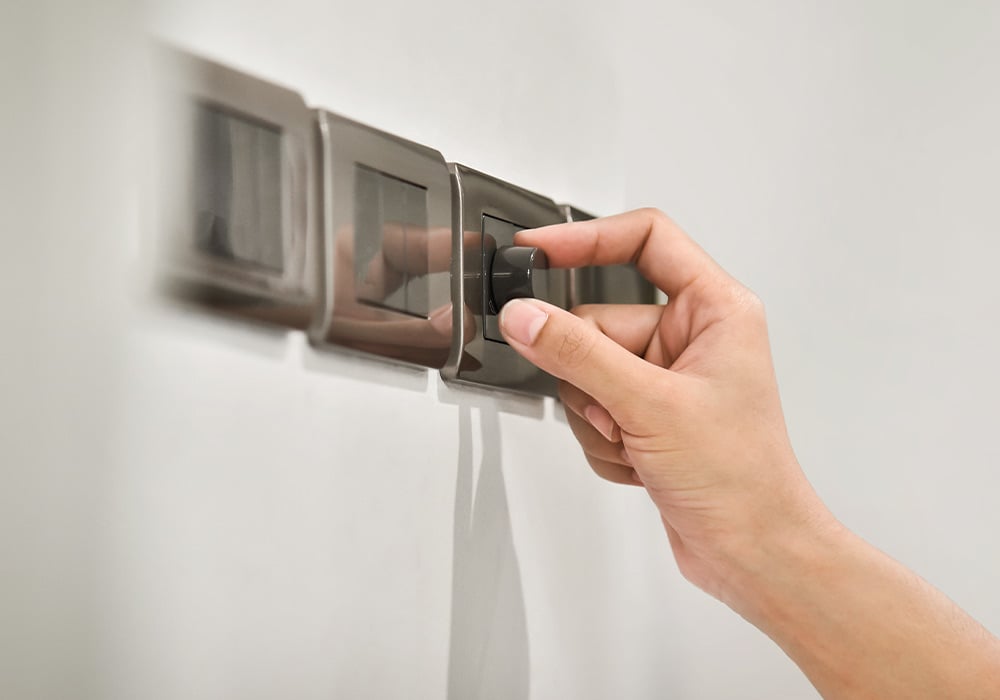
Circuits can be classified as series or parallel. In a series circuit, components are connected in a single path, meaning the current flows through every component sequentially. On the other hand, a parallel circuit has multiple paths for the current to flow, allowing each component to operate independently.
Now, let’s discuss the role of a dimmer switch in an electrical circuit. A dimmer switch regulates the current flowing to a light fixture, allowing you to adjust the brightness of the lighting. It works by rapidly switching the current on and off, interrupting the electrical flow, and ultimately controlling the amount of energy that reaches the light bulb.
With this foundation in electrical circuits, you can better understand the capacity of dimmer switches in a circuit and the implications of having multiple dimmer switches on the same circuit.
The Concept of Dimmer Switches
Dimmer switches are an excellent way to control the brightness of your lights, thus allowing you to create the perfect ambience for any activity or situation. These switches work by rapidly switching the current on and off, which in turn regulates the amount of light emitted by your bulbs.
When it comes to installing dimmer switches, there is often uncertainty about how many you can have on one circuit. The good news is that it is entirely possible to have multiple dimmer switches on a single circuit. For example, multi-location dimmer switches enable you to have dimming controls in more than one location, providing greater flexibility in managing your lighting needs.
However, it’s important to know the different types of dimmer switches available before you proceed with the installation. For instance, 3-way dimmer switches are commonly used, but they cannot support multiple dimmers on a circuit. An alternative would be to use multi-location dimmer switches that are specifically designed to handle dimming controls across various locations.
Before making a decision, consider the light requirements in each room and the compatibility of the dimmers with your bulbs. This includes checking the minimum and maximum load range of the dimmer switches. A switch with a 10-watt minimum load, for example, requires a bulb totalling at least 10W to function correctly. Checking these specifications will help you avoid issues like flickering or stuttering dimming effects.
To summarise, it is possible to have multiple dimmer switches within a single circuit, especially when using multi-location dimmer switches. However, it is essential to choose the right type of switch, understand compatibility with your bulbs, and check minimum and maximum load ranges to ensure smooth and efficient lighting control.
Key Factors to Consider When Connecting Dimmer Switches to a Circuit
Power Load Rating
When connecting dimmer switches to a circuit, it is essential to consider the power load rating. The total wattage should not exceed the maximum wattage allowance for your dimmer switch. For example, if your dimmer switch has a maximum load rating of 400 watts, the combined wattage of all connected light fixtures must not be more than 400 watts. It is important to calculate the total wattage of your light fixtures and ensure that the dimmer switch you select can safely handle the load.
Number of Light Fixtures
Another crucial factor to take into account is the number of light fixtures connected to the circuit. While it is possible to use more than one light fixture on a single dimmer switch, it is important to remember that all fixtures will be affected by the same dimming level. Make sure to check if your dimmer switch supports multi-location dimming, allowing you to dim lights independently from multiple locations. Also, it is typically recommended to not connect more than one dimmer switch on the same circuit, as it can lead to inconsistent dimming performance and a higher chance of exceeding the power load rating.
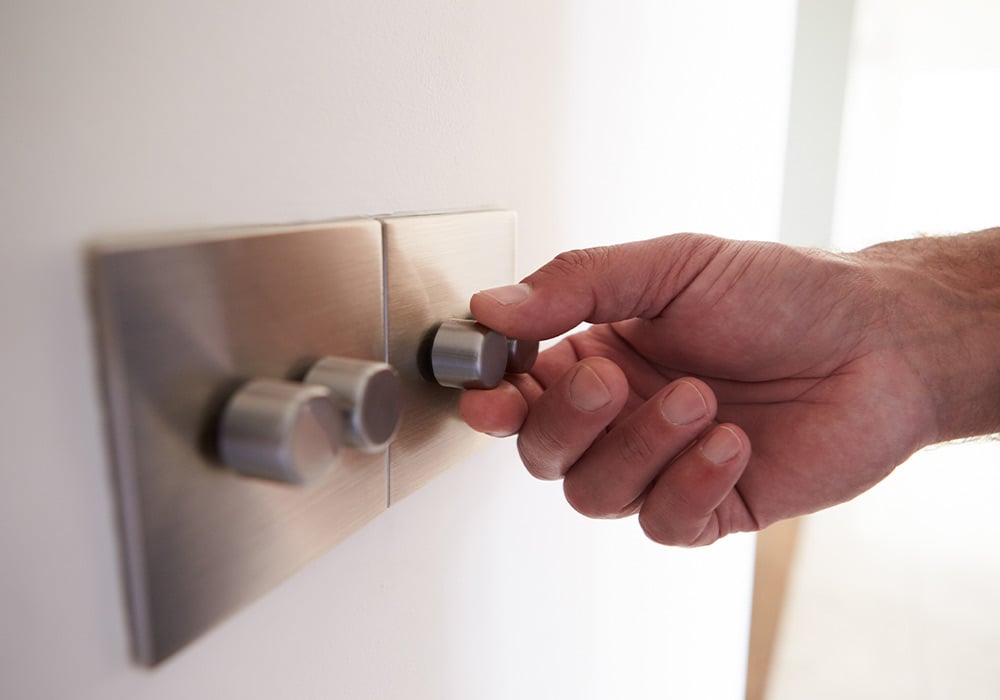
Moreover, when using a 3-way dimmer switch, only one dimmer should be used per circuit, while the other switches must be on-off switches only. In this situation, light level control is accomplished from a single location. Ultimately, understanding the power load rating and number of light fixtures can help you successfully incorporate dimmer switches into your electrical circuit.
How Many Dimmer Switches on a Single Circuit?
When you’re considering installing dimmer switches in your home, a common question arises: can you have more than one dimmer switch on a single circuit? The answer largely depends on the specific dimmer switch and your home’s wiring configuration.
Typically, you can have multiple dimmer switches on a single circuit, but you should only have one dimmer switch per light. It’s important to note that when you have two switches controlling one circuit, they are both 3-way switches. These switches have three active contacts, one common and two travellers, plus a ground and possibly a neutral for extra features.
Modern dimmers work by rapidly switching the current on and off, and it’s theoretically possible to install multiple dimmers on one circuit. However, you need to ensure that the dimmers are compatible with each other and the lights they control to avoid issues like flickering or unpredictable behaviour.
For a 3-way dimmer switch setup, one location should have the dimmer switch, and the other switches must be on-off switches only. In this configuration, the light level is controlled from the single location containing the dimmer switch, while the other switches simply turn the lights on and off.
To summarise, you can have multiple dimmer switches on a single circuit, but limit it to one dimmer switch per light. Ensure compatibility between dimmers and lights, and use 3-way dimmer switches when necessary. This will help you achieve the desired lighting control while maintaining a safe and well-functioning electrical system.
Common Misconceptions and Precautions
It’s important to understand a few common misconceptions about using dimmer switches on one circuit. Many people think that they can install multiple dimmer switches for a single light, but this is not possible. When using a 3-way dimmer switch, you should only have one dimmer on the circuit. The other switches, which can be more than one, must be on-off switches only.
Another misconception is that all light fixtures and bulbs are compatible with dimmer switches. Make sure all the connected bulbs are dimmable to avoid faults occurring. For instance, if you have multiple light fixtures, such as several spotlights or both a ceiling and wall light, you can dim them independently using dimmer switches with more than one gang.
When it comes to precautions, you should always be cautious of any buzzing noise coming from the dimmer switch. This might indicate that there is something wrong with either the light bulb or the dimmer switch mechanism. Dimmer switches work by chopping up the AC current, and if the switch is faulty or is pushing out too much voltage for lower wattage bulbs, it can cause a buzzing sound.
Lastly, always ensure proper installation and wiring for your dimmer switches. Do not attempt to install them yourself if you’re not confident in your electrical skills. Consult a professional electrician to ensure safe and accurate installation.
Remember, it’s crucial to have a thorough understanding of dimmer switches and their compatibility with your specific light fixtures and bulbs. By taking the necessary precautions and being aware of common misconceptions, you can efficiently use dimmer switches in your home without any issues.
Troubleshooting Dimmer Switch-Circuit Issues
When experiencing issues with your dimmer switch and its circuit, follow these steps to identify and resolve the problem:
- Examine the light fixture – If the switch is already installed and the lights are flickering or not responding when the dimmer is adjusted, start with the light fixture and its transformer. There are two common types of fixtures: standard voltage (120VAC) and low voltage.
- Check the compatibility – Ensure that your dimmer switch is compatible with the type of lights you are using, such as LEDs, incandescent, or fluorescent. Incompatible switches might cause flickering, buzzing, or no response at all.
- Inspect the wiring – Make sure that the wiring connections are secure and the correct wires are connected to the right terminals. Double-check the connections between the common and traveller wires in case of multi-way dimmer switches.
- Assess the load – Dimmer switches have a specified load capacity, usually stated in watts. Ensure that the total wattage of the connected lights does not exceed the dimmer switch’s capacity. Overloading can cause poor performance or even damage to the switch.
- Evaluate the dimming range – Some dimmer switches have adjustable controls to set the dimming range. Ensure that it is set appropriately for your lights. If the range is not suitable, the lights may not dim correctly or even turn off unexpectedly.
If these steps do not resolve the issue, consider consulting an electrician for professional advice. Remember to always follow safety precautions and turn off the power supply before performing any electrical work.
Variations to Dimmer Switches and Circuits
When setting up dimmer switches in your home, you must consider various factors. The number of dimmer switches required on one circuit depends on the type of switches and circuit design. To give you a better understanding, let’s explore different dimmer switch variations and their compatibility with various circuit setups.
Dimmer switches come in different types, such as “Trailing Edge” and “Leading Edge.” Their compatibility with LED light bulbs will depend on the dimmer switch type and its minimum/maximum load range. Make sure to check your existing dimmer specifications before adding new ones or replacing light bulbs. Otherwise, incompatibility issues may arise.
In a typical circuit with two switches controlling one light, you would use 3-way switches. They have three active contacts, one common and two travellers, as well as a ground and, possibly, a neutral wire for added features. However, if you want to add more control points beyond two switches, you need to use 4-way switches for each additional control location.
For dimming controls in more than one location, you can opt for multi-location dimmer switches. Unlike 3-way dimmer switches, multi-location dimmers support multiple dimming controls on the same circuit. You can pair these with a compatible dimmer switch, non-dimming 3-way switches, or smart-home systems and remotes for further flexibility.
If you have multiple light fixtures (e.g. spotlights or ceiling and wall lights), you can dim them independently using dimmer switches with more than one gang. When using 2+ gang dimmer switches, ensure all connected bulbs are dimmable to prevent faults. It’s also important to consider the minimum and maximum loads for the dimmer switches to ensure a smooth, flicker-free dimming experience.
In summary, the number of dimmer switches you can use on one circuit depends on factors such as switch types, circuit design, and compatibility requirements. Prioritise making informed choices to achieve the desired lighting control and ambience for your space without compromising safety and functionality.
Safety Measures When Handling Dimmer Switches and Circuits
When working with dimmer switches and circuits, it is crucial to prioritise safety. Before starting, gather necessary tools such as wire cutters, 3-way switches, and 3-way dimmers.
First and foremost, ensure your safety by turning off the power to the circuit you will be working on. To do this, locate and switch off the corresponding circuit breaker in your fuse box. This will prevent electrical shocks and accidents while you handle the switches and wiring.
When installing or modifying a dimmer setup, it is essential to choose the right equipment for your needs. Be sure that the dimmer switch is 3-way compatible if intending to replace a 3-way switch. Compatibility between LED drivers and dimming equipment is also crucial to ensure proper dimming performance.
When working with electrical connections, avoid touching live wires with your bare hands. Wear suitable protective gear, such as insulated gloves, to protect yourself from possible shocks.
Always follow the manufacturer’s instructions for the specific dimmer switch type you are installing. Proper installation is critical to prevent hazards and ensure the successful operation of the dimmer switch.
When in doubt or if you are not comfortable handling electrical components, it is always recommended to call a qualified professional electrician to assist. They have the necessary skills and knowledge to safely handle your dimmer switch installation or troubleshooting.

